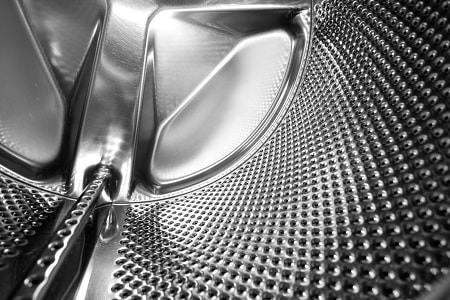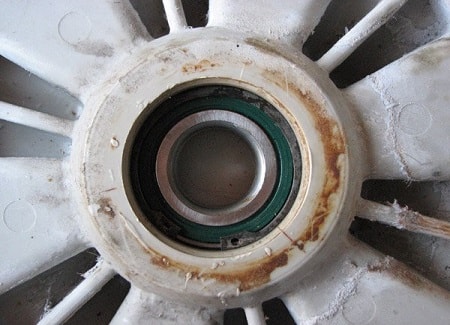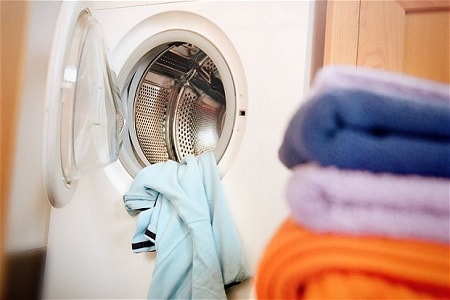The automatic washing machine is a genius invention of mankind. Most housewives simply cannot imagine their life without this wonderful assistant. This is not surprising. The washing machine not only washes clothes on its own, it also caresses it, wringes it out, and some models even dry it. All this time, the hostess can calmly go about her business.
However, sometimes the washing machine begins to tear the laundry, bringing troubles and losses to its users. For example, on fresh, just washed linen, holes or tears are suddenly found. But why does the washing machine tear the laundry? There may be several reasons for this. Let's take a closer look at them.
Causes of the trouble of the washing machine
Regardless of the type of unit and its manufacturer, the washing machine must handle the laundry carefully and carefully. And it certainly shouldn't spoil and tear it during washing. If your washing machine starts to rip your laundry, there is definitely a reason. Let's look for her. The reasons why the washing machine tears laundry can be as follows:
- things loaded into the drum rub against each other and break, against metal fittings - zippers, buttons, hooks, bones, and so on;
- the inner surface of the drum of the machine has subtle damage - chips, cracks or burrs;
- things are torn due to the fact that the drum of the washing machine is displaced relative to its axis;
- the wrong washing mode is selected;
- washing powder is too aggressive and not suitable for the selected type of fabric;
- for machines with vertical loading, sharp parts appeared on the inner surface of the hatch - chips, springs, seizures and more;
- factory defect of the drum, manhole cover or other parts.

To understand exactly what caused the trouble, you need to carefully inspect the washing machine. Of course, it is best if a specialist does it, but you can try to independently find the reason why the washing machine started tearing the laundry. So what do you do?
![]() See also - The washing machine freezes during washing
See also - The washing machine freezes during washing
Laundry is torn by small solid objects
Before you start "sinning" on the washing machine, you need to carefully examine the damaged things and analyze the following facts:
- quality of fabric;
- the life of the thing;
- compliance of the selected washing mode with the quality and composition of the material from which the item is made.
Why is it so important? The fact is that sometimes the washing machine is not at all to blame for the fact that clothes are torn. If your favorite dress made of fine fabric, which you have been wearing for more than five years, is torn, this is not surprising. When spinning at high speeds, the worn fabric could simply rub against the drum or break, entangled with other things.
Another reason the washing machine tears laundry is if solid objects enter the drum. Any twigs, pebbles, or nuts left in your pockets can cause your favorite thing to end.The cause of trouble can also be an unbuttoned zipper or button, a bone that has come out of a bra, or a rivet that has fallen off.
Another source of potential danger is the wrong washing and spinning regime. The washing recommendations on the label of almost every product are there for a reason. You should take a close look at them. If it says “hand wash only”, then putting the item in the washing machine will definitely “kill” it.
Defective door or drum surface
If all the previous reasons do not apply to you, the source of the trouble is probably the washing machine drum itself. Burrs and scuffs can appear on its surface, both during careless manufacture and during operation. You will find a factory defect at the very first wash. If this happens, contact the service center immediately. There they are obliged to help you for free. Drum damage is definitely a warranty case.
If the problem appeared already during operation, it means that you yourself have already damaged the drum. For example, metal bolts, nails or nuts can leave small chips or burrs on the inner surface of the washer that are invisible to the eye. They are the reason that the machine began to spoil things.

What to do? How to find damage? Chips can be so microscopic that you can't feel them with your fingers. In order to find burrs on the inside of the drum, take an old stocking or nylon tights. Put the nylon on your hand like a mitten or roll your tights into a ball. Now carefully examine the insides of the washer - if there is a burr, the nylon will surely "catch" it.
Also carefully examine the loading door, collar and door of the washing machine. Chips can be there too.
Fabric tearing due to bearing failure
If, after washing, you took out of the machine not just things touched by small holes, but clearly torn laundry, the reason may not be the drum itself, but a damaged bearing. During washing, the drum rotates on the shaft at a sufficiently high speed. In this case, sometimes things can tear, because they fall into the gap between the tank and the drum. If this happens, at the exit you will receive a torn rag instead of your favorite dress or shirt. Why it happens?

The thing is that the drum and shaft are not connected directly to each other, but by means of a bearing. It not only ensures perfectly smooth and correct rotation of the drum, but also centers it about the axis. If the bearing is crumbled, the tank will rotate with an offset, and runout will be observed. As a result of this displacement, the gap between the edge of the tub and the drum increases. It is in this gap that the linen falls and is torn. In such a situation, keeping things intact is almost impossible.
Wrong washing mode
Very often, such a banal thing as an incorrect washing regime becomes the cause of damage to clothes. The operating instructions are written to be read and strictly followed. If your washer tears your clothes, you are probably spinning too high (over 800 rpm). Or maybe you choose an intensive mode for fabrics that require delicate handling.

Surprisingly, despite the warnings from the manufacturers, many housewives believe they know better. While this sounds pretty silly, the reason is very relevant. So if you are in doubt which mode to choose for washing, choose the most delicate one.
How to protect yourself from damage to your laundry
At the end of the conversation, I would like to give some recommendations to those who do not want a repetition of an unpleasant situation or still do not know why the washing machine tears the laundry.
- Before putting the item into the drum of the washing machine, carefully inspect all seams and pockets, fasten buttons, zippers and rivets.
- If your clothing has a lot of metal, turn it inside out. This will allow the hooks and rivets to come into contact less with nearby items.
- If you are not sure about the strength and quality of the material, select the delicate mode for washing, and set the spin cycle to the minimum number of revolutions. Of course, the clothes will take a little longer to dry, but there is a greater likelihood that they will not tear.
- After finishing the washing process, remove the items from the machine and turn the drum by hand several times. This will let you know if there are any small items left. Also, be sure to fold back the cuff and look inside. All sorts of things could fall there too.
- For washing especially delicate items, use special bags. Also use them on items that have sequins, rhinestones, beads, beads, and other hard jewelry.
- Do not overload the clipper. If there are too many items, there is not enough water to dissolve all the powder. Tissues sprinkled with powder rub against each other more strongly, which means they tear much faster.
- Check the quality of the detergent. It is likely that you are using a product that is too aggressive, it just eats away at the fabric. If so, change the powder.

